
Consumer Insights
Uncover trends and behaviors shaping consumer choices today
Procurement Insights
Optimize your sourcing strategy with key market data
Industry Stats
Stay ahead with the latest trends and market analysis.
The Expert Market Research report, titled “Hypobromous Acid Manufacturing Plant Project Report 2026 Edition: Industry Trends, Capital Investment, Price Trends, Manufacturing Process, Raw Materials Requirement, Plant Setup, Operating Cost, and Revenue Statistics” includes various aspects that are critical for establishing a hypobromous acid plant. These include infrastructure requirements, transportation requirements, utility specifications, and financial and economic analysis, among others.
The global emphasis on clean water supply is a significant driver for hypobromous acid. As a potent disinfectant, it effectively eliminates bacteria, fungi, and viruses, making it vital for both drinking water and industrial applications. The World Health Organization (WHO) reports that approximately 2 billion people lack access to safely managed drinking water, leading to millions of cases of waterborne diseases such as cholera and typhoid fever. For instance, in 2021, there were 3 million cases of cholera reported globally, with 95,000 deaths, highlighting the urgent need for effective disinfectants like hypobromous acid to improve water infrastructure and public health standards.
Increased awareness of health and hygiene has also escalated the demand for effective disinfection methods in healthcare facilities and residential areas. Governments are investing significantly in healthcare infrastructure; for example, India's government announced a credit incentive program worth Rs. 500 billion (approximately USUSD 6.8 billion) to enhance healthcare facilities. This investment will likely lead to an increased use of disinfectants such as hypobromous acid in hospitals and public spaces.
Moreover, the aquaculture sector is witnessing rapid expansion, with projections estimating it will reach 116.6 million tons by 2032, growing at a rate of 4.2% annually. The emergence of diseases like tilapia parvovirus in India underscores the importance of effective disinfectants in aquaculture to mitigate waterborne diseases that threaten fish stocks and human health.
Other elements to consider while establishing a hypobromous acid plant include raw material sourcing, workforce planning, and packaging. The production of hypobromous acid relies on several key raw materials, primarily bromine and carbon dioxide. Bromine serves as the essential source for generating hypobromous acid through a chemical reaction with water, often in the form of an aqueous bromine solution. This process facilitates the formation of hypobromous acid. Carbon dioxide is also used to create a chlorinated carbonic acid solution that, when mixed with bromine, results in hypobromous acid. Bromine is commonly extracted from seawater or brine pools, while carbon dioxide can be obtained from natural gas processing or fermentation processes. The integration of these raw materials allows for the efficient production of hypobromous acid.
Moreover, to help stakeholders determine the economics of a hypobromous acid plant, project funding, capital investments, and operating expenses are analyzed. Projections for income and expenditure, along with a detailed breakdown of fixed and variable costs, direct and indirect expenses, and profit and loss analysis, enable stakeholders to comprehend the financial health and sustainability of a business. These projections serve as a strategic tool for evaluating future profitability, assessing cash flow needs, and identifying potential financial risks.
Hypobromous acid (HOBr) is an inorganic compound known for its disinfectant properties and ability to kill a wide range of pathogens. It is a weak and unstable acid, primarily produced in aqueous solution, and is generated both biologically and commercially. Hypobromous acid is used as a bleach, oxidiser, deodorant, and water treatment agent due to its antimicrobial effectiveness.
Hypobromous acid was first identified in the early 19th century when chemists began studying halogen compounds. The reaction of bromine with water to produce HOBr was documented in 1826. Its use as a disinfectant gained attention in the late 20th century, particularly for applications in swimming pools and spas, where it serves as a germicidal agent.
Hypobromous acid (HOBr) is a weak and unstable acid with a molecular weight of 96.911 g/mol and a density of 2.470 g/cm³. It has a boiling point ranging from 20 to 25°C and a pKa of 8.65, indicating its partial dissociation in water. Hypobromous acid is primarily formed through the reaction of bromine with water. The hypobromite ion (BrO-) is generated from its dissociation in aqueous solutions. It possesses notable antimicrobial properties, making it useful as a disinfectant, bleach, and oxidiser.
The production of hypobromous acid primarily involves two key processes. First, bromine (Br2) is reacted with water (H2O), resulting in the formation of hypobromous acid and hydrobromic acid (HBr). In a separate approach, a chlorinated carbonic acid solution is combined with a bromine solution to produce a chlorobrominated solution, which also contains hypobromous acid. Once produced, the hypobromous acid is typically stored in tanks for later use.

Read more about this report - REQUEST FREE SAMPLE COPY IN PDF
Hypobromous acid (HOBr) is typically produced by reacting bromine with water or alkalis. Below is the detailed process:
Method: Reaction of Bromine with Water
1. Starting Materials
Bromine (Br2): The main reactant for hypobromous acid production.
Water (H2O): Acts as a solvent and reactant.
2. Reaction of Bromine with Water
Bromine is added to water in a controlled reaction vessel, where it partially dissociates to form hypobromous acid (HOBr) and hydrobromic acid (HBr).
Chemical Reaction:
Br2 + H2O → HOBr + HBr
3. Stabilisation
The resulting hypobromous acid solution is unstable, so pH adjustments are used to maintain its reactivity without allowing rapid decomposition.
Alternative Method: Reaction of Bromine with Alkali Solutions
Reaction of Bromine with Sodium Hydroxide
When bromine is added to a solution of sodium hydroxide, it forms sodium hypobromite (NaOBr), which can dissociate into hypobromous acid in solution.
Chemical Reaction:
Br2 + 2NaOH → NaOBr + NaBr + H2O
The sodium hypobromite can then release hypobromous acid (HOBr) in water.
The hypobromous acid market is driven by its diverse applications, particularly in disinfection, sanitation, and agriculture. As an effective antimicrobial agent, HOBr is widely used in hot tubs, spas, and swimming pools to maintain water quality by eliminating harmful microorganisms. Additionally, hypobromous acid plays a crucial role in the agricultural sector as a component in the formulation of pesticides and herbicides, supporting the growing demand for food production. Government reports also indicate an increasing focus on sustainable agricultural practices and stringent regulations on chemical usage, which is further propelling the adoption of hypobromous acid in agrochemicals. Its use in the pharmaceutical industry for producing drug intermediates has also driven market expansion.
A detailed overview of production cost analysis that evaluates the manufacturing process of hypobromous acid is crucial for stakeholders considering entry into this sector. Furthermore, stakeholders can make informed decisions based on the latest economic data, technological innovations, production process, requirements of raw materials, utility and operating costs, capital investments by major players, pricing strategies, and profit margins. For instance, as urban populations continue to grow, projected to reach around 7 billion by 2050, the need for improved hygiene in densely populated areas becomes important. In urban slums, where sanitation facilities are often inadequate, the demand for effective disinfectants is particularly high. With nearly 1-in-4 urban dwellers living in slum conditions, hypobromous acid's role in maintaining sanitation standards is increasingly recognised.
Below are the sections that further detail the comprehensive scope of the prefeasibility report for a hypobromous acid production plant:
Market Dynamics and Trends: Factors such as rising focus in maintenance of swimming pools are significantly affecting market conditions in the hypobromous acid sector. The construction and maintenance of swimming pools are on the rise globally, with an annual growth rate of 3.1%. Hypobromous acid is increasingly used for pool sanitation due to its effectiveness as a disinfectant. Reports indicate that over 10% of public pools face immediate closure during inspections due to violations related to improper chemical levels, highlighting the need for reliable disinfectants like hypobromous acid to ensure safety in recreational water facilities. Understanding these demands and trends helps businesses align their production plans in the hypobromous acid market.
Profiling of Key Industry Players: Leading manufacturers in the hypobromous acid market include MilliporeSigma and PACIFIC ORGANICS PVT. LTD. These companies are known for their significant contributions to the production and distribution of hypobromous acid. Recently, MilliporeSigma announced the opening of a new digital hub in Singapore, aimed at enhancing its capabilities in the healthcare and semiconductor sectors, which may indirectly influence its production processes and efficiency in delivering chemical products like hypobromous acid. Additionally, PACIFIC ORGANICS PVT. LTD. expanded its portfolio of bromine and its derivatives, reflecting a growing focus on chemical manufacturing in India.
Economic Analysis: Capital expenditure (CAPEX) analysis provides stakeholders the knowledge about required investments in advanced technologies, efficient machinery, and necessary infrastructure. Investing in high-capacity mixing equipment, such as a continuous mixer or high-shear mixer, can improve production efficiency by 20-30%. Investing in energy-efficient systems, such as combined heat and power (CHP) systems could reduce energy consumption by up to 30%, as these systems use waste heat from production processes to generate electricity and provide heating.
Fluctuations in hypobromous acid prices are influenced by factors such as raw material costs, supply chain disruptions, demand in various industries, environmental regulations, and production capacity. For example, if the price of bromine, a key raw material, increases, the cost of producing hypobromous acid rises, which can push up its market price. Supply chain disruptions, such as shipping delays or shortages in production, can also create price volatility. Additionally, growing demand for water treatment chemicals or disinfectants can lead to price hikes. Environmental regulations, such as restrictions on chemical use, may either limit production or require costly adjustments to production processes. Understanding these elements is essential for stakeholders to navigate market trends effectively.
Establishing a hypobromous acid manufacturing facility requires a comprehensive financial investment that encompasses various elements critical to the project's success. The following sections detail these components:
Projected profit margins and effective product pricing strategies improve overall profitability. Manufacturers might target a profit margin of around 20-30%, achieved through strategic pricing based on raw material costs and prevailing market demand. Effective pricing strategies should consider fluctuations in raw material prices and competitive positioning within the market.
This prefeasibility report aims to equip potential investors and existing manufacturers with crucial insights to make informed decisions in the hypobromous acid industry.




*While we strive to always give you current and accurate information, the numbers depicted on the website are indicative and may differ from the actual numbers in the main report. At Expert Market Research, we aim to bring you the latest insights and trends in the market. Using our analyses and forecasts, stakeholders can understand the market dynamics, navigate challenges, and capitalize on opportunities to make data-driven strategic decisions.*
Get in touch with us for a customized solution tailored to your unique requirements and save upto 35%!
Basic Plan
USD 5,699
USD 4,844
Get Startedtax inclusive*
Raw Material and Product Specification, Raw material consumption, Process flow diagram
Machinery Cost, Working Capital
Utilities consumption, Operating cost, Overheads, Financing Charges, GSA , Packaging
Premium Plan
USD 6,799
USD 5,779
Get Startedtax inclusive*
Key Processing Information, Capital Investment Analysis, Conversion Cost Analysis
Raw material consumption and prices, Utilities consumption breakdown, By-Product Credit, Labour Charges Breakdown
Land and Site Cost, Equipment Cost, Auxiliary Equipment Cost, Contingency, Engineering and Consulting Charges
Enterprise Plan
USD 8,899
USD 7,564
Get Startedtax inclusive*
Key Processing Information, Capital Investment Analysis, Conversion Cost Analysis, Variable Cost Breakdown, Investing Cost Breakdown,
Breakdown of machinery cost by equipment, Auxiliary Equipment Cost, Piping, Electrical, Instrumentation
Cost of Construction, Plant Building, Site Development Charges
Land Cost, Development Charges
Dynamic Spreadsheet (Unlocked)
*Please note that the prices mentioned below are starting prices for each bundle type. Kindly contact our team for further details.*

Basic Plan
USD 5,699
USD 4,844
Key Processing Information
Raw Material and Product Specification, Raw Material Consumption, Process Flow Diagram
Capital Investment Analysis
Machinery Cost, Working Capital
Conversion Cost Analysis
Utilities Consumption, Operating Cost, Overheads, Financing Charges, GSA , Packaging

Premium Plan
USD 6,799
USD 5,779
All Contents of Basic Report
Key Processing Information, Capital Investment Analysis, Conversion Cost Analysis
Variable Cost Breakdown
Raw Material Consumption and Prices, Utilities Consumption, Breakdown By-Product Credit, Labour Charges Breakdown
Investing Cost Breakdown
Land and Site Cost, Equipment Cost, Auxiliary Equipment Cost, Contingency, Engineering and Consulting Charges

Enterprise Plan
USD 8,899
USD 7,564
Includes all Report Content
Key Processing Information, Capital Investment Analysis, Conversion Cost Analysis, Variable Cost Breakdown, Investing Cost Breakdown,
Equipment Cost Breakdown
Breakdown of Machinery Cost By Equipment, Auxiliary Equipment Cost, Piping, Electrical, Instrumentation
Land and Construction Cost Details
Land Cost, Development Charges, Cost of Construction, Plant Building, Site Development Charges
Dynamic Excel Cost Model
Dynamic Spreadsheet (Unlocked)
*Please note that the prices mentioned below are starting prices for each bundle type. Kindly contact our team for further details.*
Flash Bundle
Number of Reports: 3
20%
tax inclusive*
Small Business Bundle
Number of Reports: 5
25%
tax inclusive*
Growth Bundle
Number of Reports: 8
30%
tax inclusive*
Enterprise Bundle
Number of Reports: 10
35%
tax inclusive*
How To Order

Select License Type
Choose the right license for your needs and access rights.

Click on ‘Buy Now’
Add the report to your cart with one click and proceed to register.

Select Mode of Payment
Choose a payment option for a secure checkout. You will be redirected accordingly.
Gain insights to stay ahead and seize opportunities.
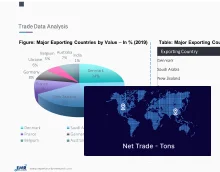
Get insights & trends for a competitive edge.
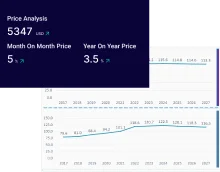
Track prices with detailed trend reports.
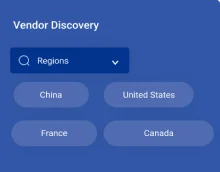
Analyse trade data for supply chain insights.

Leverage cost reports for smart savings
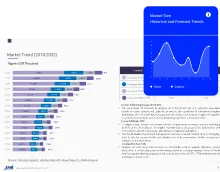
Enhance supply chain with partnerships.
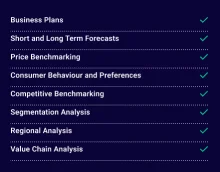
Connect For More Information
Our expert team of analysts will offer full support and resolve any queries regarding the report, before and after the purchase.
Our expert team of analysts will offer full support and resolve any queries regarding the report, before and after the purchase.
We employ meticulous research methods, blending advanced analytics and expert insights to deliver accurate, actionable industry intelligence, staying ahead of competitors.
Our skilled analysts offer unparalleled competitive advantage with detailed insights on current and emerging markets, ensuring your strategic edge.
We offer an in-depth yet simplified presentation of industry insights and analysis to meet your specific requirements effectively.
Share